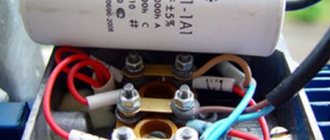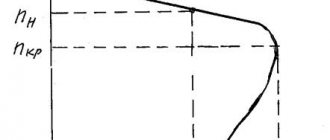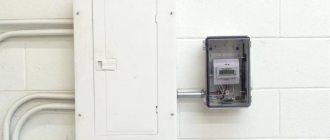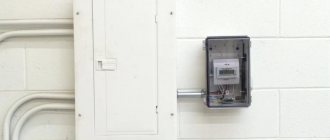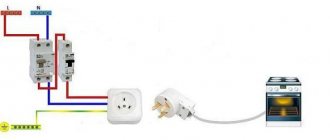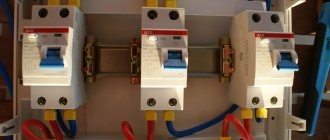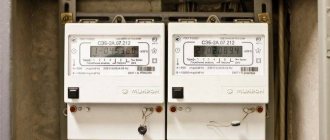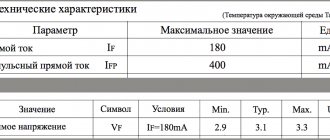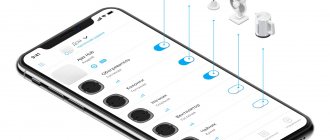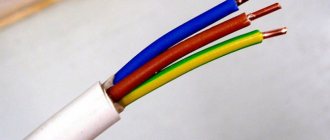Among electrical machines designed to perform mechanical work, three-phase units are considered one of the most productive. The rotor rotates through the simultaneous influence of magnetic flux from the phase windings. Which ensures the simultaneous force of three moments at once, proportionally interacting with each other. How you can connect a three-phase motor, depending on their design features and the parameters of the electrical network, we will consider further.
general information
Connecting three-phase motors involves a relatively complex operation that requires an understanding of the processes occurring in the electrical installation. For this purpose it is necessary to consider both the constituent elements and their purpose.
Structurally, three-phase electric motors consist of:
- Stator with magnetic core;
- Rotor with shaft;
- Winding.
Depending on the type of engine, there are models with a squirrel cage or wound rotor. In some, the rotor rotates only due to the electromagnetic field induced from the stator windings, in others, the rotation of the shaft receives force from the rotor field when current flows in its windings. To turn on three-phase motors, you need to understand how the phases of the windings are connected to each other.
Motor winding connection diagrams
In three-phase asynchronous electric motors, two connection options are used - star and delta. In three-phase asynchronous electrical machines, depending on the model, it is possible to implement the following scheme:
- Star;
- Triangle;
- Star and triangle.
The simplest way to determine the capabilities of a particular asynchronous electric motor is to look at the nameplate (a metal plate with technical parameters). They also indicate the operating voltage rating for the corresponding connection. Here the designation can be indicated only for a star, only for a triangle, or both options at the same time; an example of such marking is shown in the figure below:
Example of designation on a nameplate
If the nameplate is missing or the information on it has been erased, then the connection diagram can be found by opening the winding start distribution block (BRNO). If you see 6 pins with terminal connections, you can determine the type of connection of the windings. It is much worse when the boron has only three terminals, and the connection is made inside the housing. In this case, you need to disassemble the three-phase electric motor to see the connection method.
Star
The star connection diagram for a three-phase motor provides that the beginning of each winding is combined into one point, and phases from the supply line are connected to their ends. This type provides a much smoother start and relatively gentle operation. However, the power with which the rotor rotates is one and a half times lower than when connected by a triangle. Schematically, this connection looks like this:
Star connection diagram
As you can see in the figure, the ends of the terminals of the three-phase motor windings A2, B2, C2 are connected into one electrical unit. And phase wires are connected to terminals A1, B1, C1, usually 220 or 380 volts.
If we consider this circuit using the example of Born, it will look like this:
Star connection of windings
Triangle
To connect an electric motor with a triangle, you need to bring the end of one winding to the beginning of the other. And thus close the windings into a kind of ring, at the connection points of which the leads of the supply line are connected. The triangle connection scheme provides maximum torque and force on the shaft, which is especially important for heavy loads. However, the current in the windings at rated load will also increase proportionally, not to mention overload conditions.
Therefore, turning on a three-phase motor with a delta requires a voltage reduction. For example, if the same electrical machine can be connected with both a triangle and a star winding connection, then the star will have a supply voltage of 380, and the triangle 220 volts or 220 and 127 volts, respectively. Schematically connecting the windings with a triangle will look like this:
Triangle connection diagram
As you can see, the connection is made from A2 to B1, from B2 to C1, from C2 to A1, in some models of electrical machines the markings of the terminals may differ, but on the cover of the burner their affiliation to a particular winding and possible options for connecting to each other will be displayed.
Triangle connection of windings
Connection methods
Now it’s worth considering ways to connect an asynchronous motor to a household network. There are only 4 and they can be combined!
With capacitor
The connection diagram for a 220V electric motor through a capacitor is the most popular, because this is how incoming ripples and currents are extinguished. This results in that very smooth start that prevents the engine from quickly “dying.”
For assembly you will need:
- Starter – very desirable. It will be more comfortable and safer to work with him.
- Working capacitor.
- Start capacitor.
The diagram itself looks like this:
A mains current of 220 goes to the starter. Then it goes to the toggle switch (needed as additional protection against accidental start + emergency shutdown).
2 capacitors are connected in parallel: working and starting. The capacity of the first is calculated using this formula.
The launcher should be 1.5-2 times more powerful, and ideally – 3!
The connection diagram for a 380V to 220V motor via a capacitor looks like this.
With reverse
Connecting a motor with reverse is useful if you are assembling, for example, a wood lathe. It is not difficult to reverse the process; you just need to swap the phase-mains and phase-capacitor pairs.
A single-pole type switch can handle this.
Without capacitor
If you do not plan to connect a capacitor to the engine or do not have one, then you can do it this way. To do this you will need a transistor switch.
The circuit without a capacitor for an electric motor looks like the photo above, but works as follows:
- Mains voltage is supplied to 2 input points.
- The third input receives voltage from a capacitor-resistor (RC) connection, which sets the time.
- A switch is installed between the 2 resistors R to regulate the phase shift.
- Transistor VS1, when the capacitor is filled, opens switch VS2. It turns out that the current moves smoothly and there is no ripple.
When connecting a 380 to 220 electric motor via switches, problems may arise with finding these same transistors. Therefore, a capacitor is still the most convenient option.
"Star Triangle"
As was said, you can “invert” the voltage from 380 to 220 using two different circuits. Sometimes you may need to switch between delta and star if you want to maintain smooth operation without losing power.
In general, the circuit is complex, because 3 starters are used! But sometimes you can’t live without it, so here are the instructions:
- Mains voltage is applied to the first starter.
- The winding is connected to the second one.
- The remaining contacts are connected to the first two starters.
- After this, the winding from the second starter is connected to all phase contacts through a triangle.
- If you turn on the third starter, the leads are disconnected and you get a star.
You can see how to switch from a star to a triangle in this video:
Connection options
Three-phase motors have excellent characteristics, a fairly wide range of models and are used in a wide variety of devices. Therefore, they are used both in industrial devices with three-phase power supply, and in household single-phase electrical installations. Next, we will analyze both options for connecting electrical machines.
To a single-phase network
The design feature of a three-phase unit, in contrast to single-phase asynchronous motors, is the need for a phase shift in the windings, otherwise the shaft will not rotate. To change the situation, one phase is divided for all three windings, two of which include additional inductance and starting capacitance. Which provide a shift in current and voltage relative to the voltage in the network. Inductance allows you to shift the voltage to the negative region up to -90°, but a single-phase capacitor, on the contrary, to the positive region up to +90°.
Graphically, the voltage-current lag function will look like this:
Change in current and voltage across capacitance and inductance
However, in practice, the bias is provided only by capacitive elements, which are included in the power supply circuit of one of the windings, and the other two are run between the phase and neutral wires. The connection diagram for a three-phase motor in a single-phase circuit is shown in the figure below:
Connection diagram to a single-phase network
As you can see in the figure, a tap is made from the phase wire containing a single-phase capacitor magazine of two elements, one for starting C2, the second for constant operation of C1. When the start button is pressed, contacts SA1 and SA2 close simultaneously, but after sufficient torque has been created and rotation has begun, SA1 is discarded and removes C1 from the circuit, leaving C2. Power, with this engine switching scheme, is reduced to 30 - 50%.
Capacitor starting is calculated using the formula:
Serb = (2800*I)/U - to turn on a three-phase motor with a star
Crab = (4800*I)/U - to turn on a three-phase motor with a triangle
The starting capacitor is used only in loaded starting, so it can not be used in light starting. Then, instead of the launcher capacity, the worker will be used.
To a three-phase network
In a three-phase network, despite the presence of the required type of supply voltage, a magnetic starter is always used to drive the motor into rotation. Starting without a starter or contactor is quite dangerous, so they are an integral element.
Connection diagram to a three-phase network
The figure above shows a typical diagram for connecting a motor to a three-phase network, which works on the following principle:
- Voltage is supplied to the engine from the mains through switch 1.
- further, when the start button 6 is turned on, the contactor coil 4 is powered, which attracts the power contacts of the starter 3;
- after which the engine begins to rotate, and the start button 6 is bridged through the repeater 5;
- to stop the three-phase motor, use the Stop button - 7, which is in the normally closed position;
- Motor overload protection monitors the current load in the network and, if a threat arises, opens contacts 2.
This diagram can be simplified due to the design features of the starters used. Since some of them are manufactured without repeaters, they may have the function of reversing a three-phase motor or be produced without protection. You can get more detailed information about magnetic starters from the corresponding article on the website:
Connecting a three-phase motor to a 220V network
Connecting a three-phase motor to a single-phase network is just as possible as connecting it to a three-phase network. The only difference will be in the connection method and the operating power produced by the motor. It cannot exceed 50% of the maximum value achieved when powered from a 380 Volt network if the windings are connected with a star. When connected using the delta method, 70% of the maximum possible power can be developed. Therefore, if the power is supplied from a 220V network, it makes sense to connect the electric motor only in the second way.
Attention! If the voltage in the electrical network is 220 Volts, then the currents at startup do not reach critical values even when connected in a triangle. Therefore, this scheme is optimal.
Motor connection diagram 380 to 220
When powered by 380, there is one phase per winding. But when connected to 220 Volts, the phase and neutral wires are connected to two windings, the third remains free. To compensate for the absence of the third phase, the electric motor starts through a capacitor.
Important! You can start a 380 Volt motor from a voltage of 220V only using capacitors. Without them, only engines designed to be powered by 220 initially can operate.
If a low-power motor (no more than 1500 W) is started without an initial load, then it can only be connected through a working capacitor. There are two wires coming from it. The first one needs to be connected to zero, and the second one to the 3rd vertex of the triangle.
Attention! If you need to reverse the direction of rotation of a motor connected to a 220 Volt network, then connect the first terminal from the capacitor not through zero, but through a phase wire.
When starting a powerful asynchronous motor (from 1500 W) or when starting a low-power one, but with an initial load, connect it to 220V through the operating and starting capacitors. The latter is connected in parallel to the first. It is necessary to increase the starting torque, so it is turned on only at the moment the motor is started.
The starting capacitor is connected to the circuit through a button, and 220V power is supplied by moving a special toggle switch to the “on” position, and turning it off to the “off” state. Instead of a toggle switch, you can use a button with two positions. Then the launch will be as follows:
- Power is supplied through a toggle switch or a special button;
- The capacitor start button is pressed;
- It is held until the electric motor accelerates;
- The start button is released, causing its springs to open the capacitor circuit.
When you turn on the electric motor in a 220-volt network with reverse, you will need another toggle switch to change the direction of shaft rotation. When changing position, one of the terminals of the working capacitor will be connected either to phase or to zero.
The figure above shows a diagram for connecting a 380 motor to a 220 network with reverse with a start button. It is relevant if the motor does not pick up speed in the absence of a starting accumulator (it is on the right in the figure).
